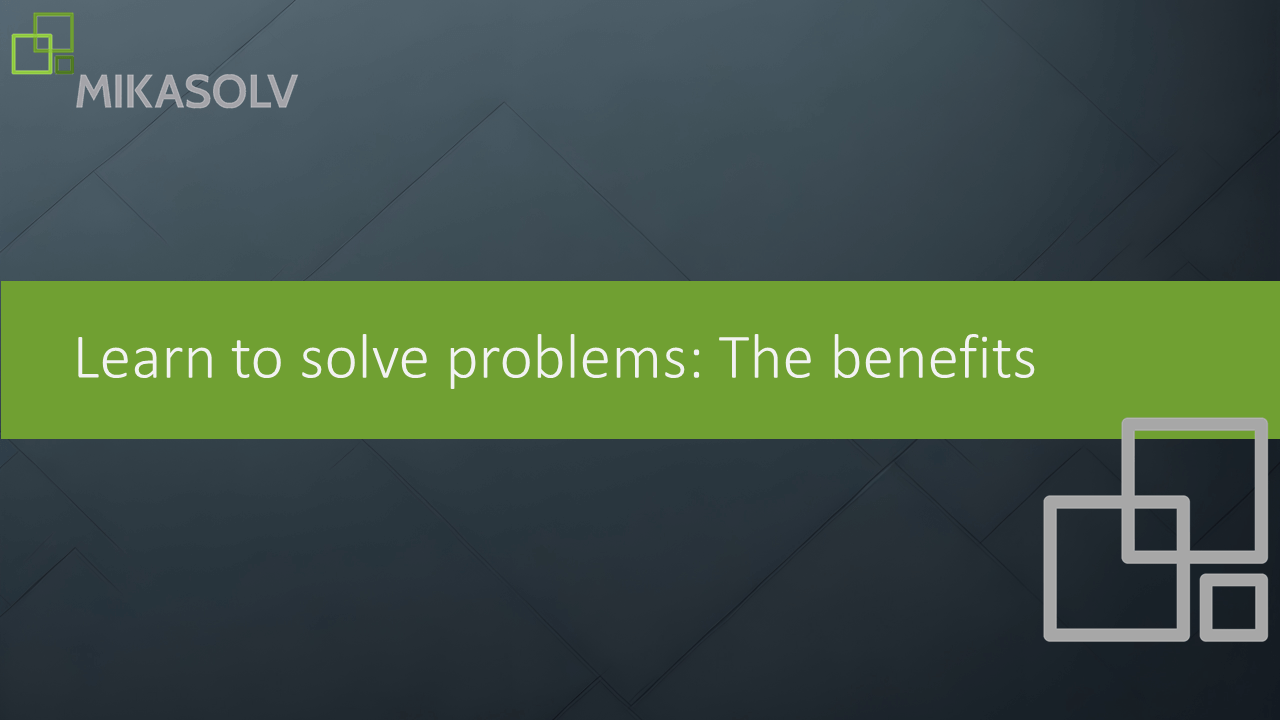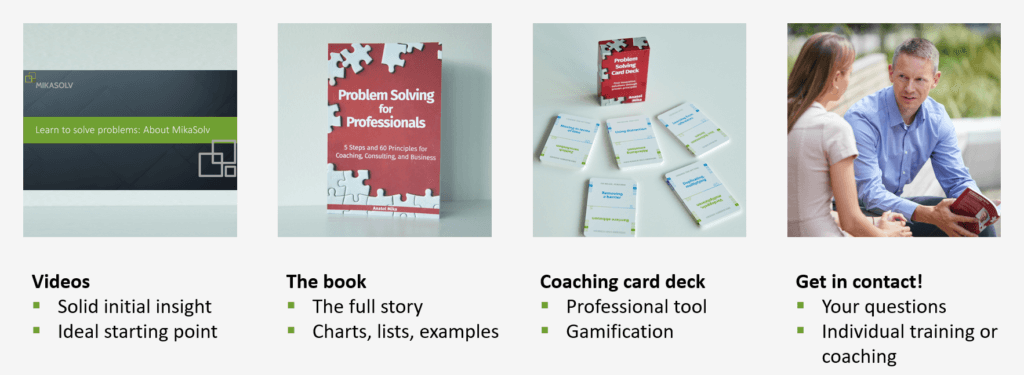Why a problem solving method?
What we discuss in everyday business – in meetings, coaching sessions and consultations – are often problems: what the problem is, what it is not, who we think is to blame and whose solution is the best. A methodical, reasonable approach and a common language would be very important here. We can see the great benefits of this in analogous fields such as project management, which is very well developed today.
I offer a method that can be a substantial help first in problem definition and then in developing good solution ideas. Are you interested? You will find everything you need on this website, in my videos and in my book.
Good luck and enjoy the journey.

Our initial situation
Most of us were likely never taught which steps to follow when dealing with a difficult problem. Therefore, much of what we undertake for problem clarification and solution-finding is done intuitively. Consequently, many problem-solving opportunities remain unused.
In meetings, we talk past each other. We lose track and engage extensively with trivial matters. Problems are misunderstood, and suitable solutions are overlooked. We invest a significant amount of time that could be better utilized otherwise. Moreover, for those involved, the entire process is occasionally tedious and frustrating.
Methods are important!
This also applies, for example, in project management: You have probably already been directly or indirectly involved in project management. You have contributed to the creation of project plans, discussed work packages, and taken responsibility for them. You have reported on the progress of the work, documented dependencies, and examined the resulting critical path.
All of the aforementioned examples demonstrate how project management provides proven approaches and enables a common language. Imagine having to tackle complex tasks and implement large projects without these effective approaches and the ability to use a common language! To put it mildly, that would be exhausting and unproductive.
Isn’t it true that our problem discussions often feel just as exhausting?
There is a solution
With my method, I offer proven steps, provide helpful content, and, for this subject, offer a common language that we can use for clear communication. How does it work?
We identify the underlying problem (the “core problem”) by first clarifying the exact goal being pursued and then determining what is currently preventing the achievement of that goal. At the end of this process – consisting of 5 steps – a well-founded definition of the problem is established. This definition is necessary as a basis for the next part, the process of finding a solution.
For the process of finding a solution, we employ “Solution principles” that have proven to be particularly useful in many instances. These principles encompass the crucial steps that constitute the solution, such as simulating a process, shifting something in terms of time or location, removing a barrier, or finding a suitable helper. In order for these crucial solution steps to be applicable across different specific cases, they are initially formulated in an abstract manner. For a given specific case, the question then is: What would this step mean in our context – and what benefit would it bring? Also, which element of our problem could we apply it to?
What do we gain from all of this? The result is clear communication and better mutual understanding, faster progress, fewer or shorter meeting times, fewer misunderstandings, a better understanding of the problem, more suitable solutions, and more enjoyment of our work. Plus, it is not necessary for everyone in the meeting to apply the method or even be familiar with it. Just you doing it would already be a tremendous gain!
My offer

This is my offer to you: Working with my method, you can learn how to best deal with problems, and find great solutions. Any problems that are discussed in your team or department; any solutions you are looking for. With this knowledge, you will be able to understand your own problems and those of your colleagues faster and better, and be ready to help in finding viable solutions.
- In my videos on the subject, you will gain a solid initial insight into the topic. I provide these videos openly available because it is important to me to create awareness of this topic and share my knowledge.
- In my book, you will find a more in-depth exploration of all the topics. As is the case with most books, you can take your time here to delve into the interesting details and later refer specifically to individual topic areas.
- If you regularly apply MikaSolv, I recommend using my coaching card deck. It is an elegant alternative to the freely available checklist of solution principles and brings a certain level of gamification to your sessions or meetings.
- Furthermore, you can always get in touch with me to discuss the possibility of a lecture, or individual or group training.
MikaSolv can be successfully used by anyone who encounters tricky problems in their everyday professional life and is fascinated rather than intimidated by a systematic approach and abstractly formulated principles.

Get the book!
My book “Problem Solving for Professionals” has all the details. I launched it in Summer 2022, and you can order it from Amazon.
